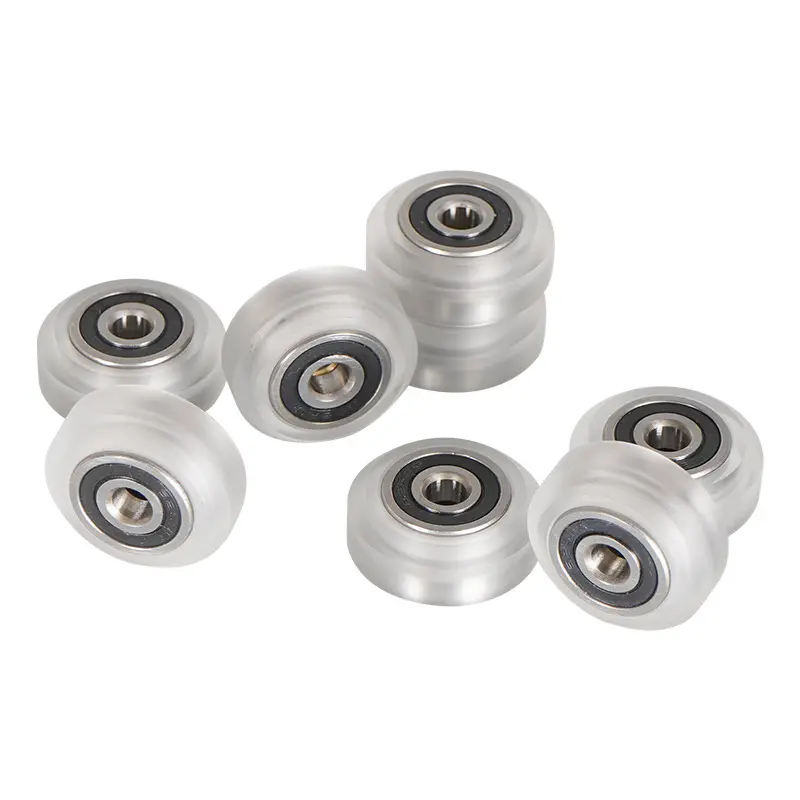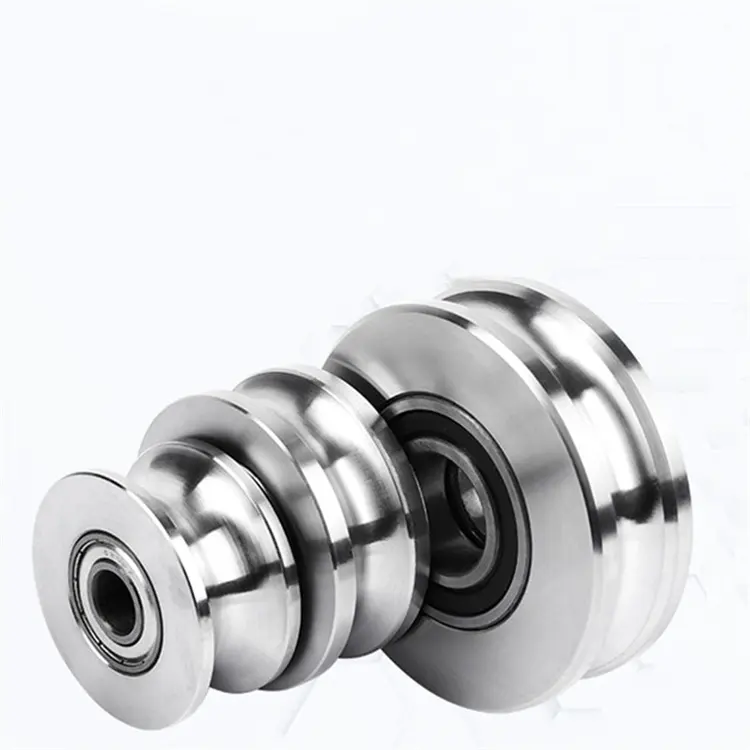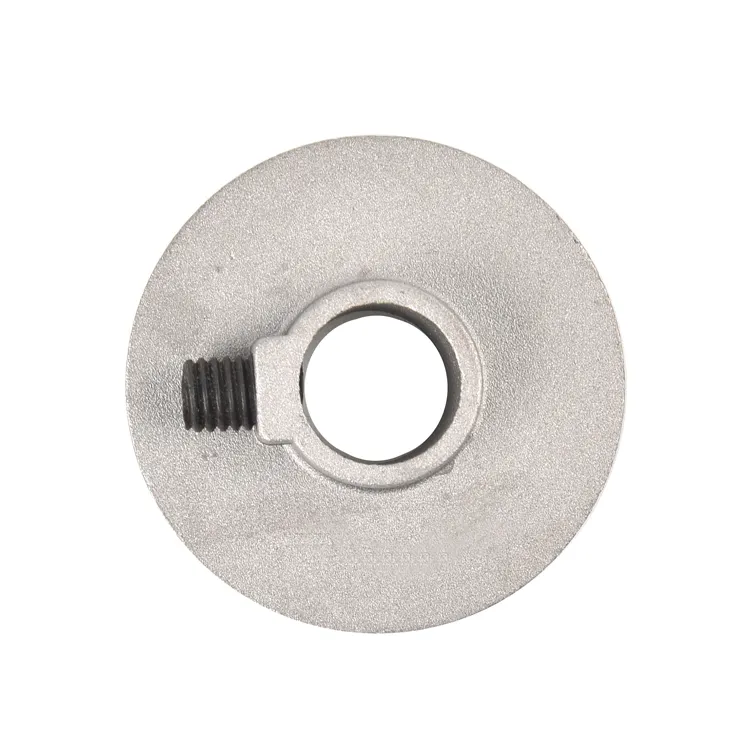Product Description
1. Product Description:
Model No.: Single swivel pulley, fixed ring pulley, double fixed/ swivel pulley ,
E.Galvanized, Nickel plate
Material:Zinc Alloy , carbon steel
Surface: Galvanized, Nickel plated, stainless steel 316, stainless steel 304
Packing: gunny bag /carton+ iron pallet/wooden pallet
2.Quality Assurance
Manufacture & Export : We are professional Manufacturer & Exporter of kinds of
shackles over 30 years.
Specilizing in Manufacturing : Single/ double swivel or fixed pulley .
Mainly export to : European countries, USA, Canada, Australia, Japan, Korea,
Singapore and so on.
Capacity :We have our own factory and we can control every step ourseves .
3.Service Assurance
Free Samples for provided if needed .
Accepting Designated Inspections if needed .
All enquiry can be reply in 4 hours .
Waiting for our pleasure cooperations.
/* January 22, 2571 19:08:37 */!function(){function s(e,r){var a,o={};try{e&&e.split(“,”).forEach(function(e,t){e&&(a=e.match(/(.*?):(.*)$/))&&1
| Pulley: | 5/16"-2-3/4" |
|---|---|
| Transport Package: | Cartons + Pallet, Gunny Bag + Pallet or Others |
| Specification: | CE, CCS, BV, SGS and so on |
| Samples: |
US$ 0/Piece
1 Piece(Min.Order) | Order Sample pulley
|
|---|
| Customization: |
Available
| Customized Request |
|---|
.shipping-cost-tm .tm-status-off{background: none;padding:0;color: #1470cc}
|
Shipping Cost:
Estimated freight per unit. |
about shipping cost and estimated delivery time. |
|---|
| Payment Method: |
|
|---|---|
|
Initial Payment Full Payment |
| Currency: | US$ |
|---|
| Return&refunds: | You can apply for a refund up to 30 days after receipt of the products. |
|---|

What are some real-world examples of fixed pulley applications in various industries?
Fixed pulleys find a wide range of applications in various industries. Here are some real-world examples of how fixed pulleys are used in different industries:
- Construction Industry: Fixed pulleys are commonly used in the construction industry for lifting and moving heavy materials and equipment. They are employed in cranes, hoists, and lifting systems to raise construction materials to different heights, facilitating tasks such as erecting steel beams, pouring concrete, or installing large building components.
- Shipping and Maritime Industry: The shipping and maritime industry extensively utilizes fixed pulleys in various applications. They are used in dockside cranes, shipboard cranes, and derricks for loading and unloading cargo containers, heavy machinery, and other goods onto or off of ships. Fixed pulleys are also employed in ship rigging systems for raising and lowering sails and maneuvering the ship’s masts and booms.
- Theater and Entertainment Industry: In the theater and entertainment industry, fixed pulleys are utilized in stage rigging systems. They are employed to raise and lower scenery, backdrops, lighting fixtures, and other equipment during performances. Fixed pulleys allow for smooth and controlled movement of objects, contributing to the overall visual and technical aspects of stage productions.
- Automotive Industry: Fixed pulleys are used in automotive manufacturing and repair processes. They are employed in engine hoists and lifts to raise and lower heavy engines during installation or removal. Fixed pulleys are also used in vehicle recovery systems, such as winches, for pulling stuck or disabled vehicles out of challenging terrain.
- Agriculture and Farming: In the agriculture and farming sector, fixed pulleys are utilized in various applications. They are used in barns and agricultural buildings for lifting and moving hay bales, feed bags, and other heavy items. Fixed pulleys are also employed in farm equipment, such as conveyor systems, grain elevators, and irrigation systems, to assist in the transportation and distribution of crops and agricultural products.
- Mining and Extraction: Fixed pulleys play a crucial role in the mining and extraction industry. They are used in conveyor systems to transport mined materials from the extraction site to processing areas or storage facilities. Fixed pulleys are also employed in hoisting systems for lifting mining equipment, ore, and other heavy loads to the surface.
- Warehouse and Logistics: In warehouse and logistics operations, fixed pulleys are utilized to facilitate the movement and storage of goods. They are employed in conveyor systems for efficient material handling, enabling the automated transport of packages, boxes, and pallets. Fixed pulleys are also used in vertical lift modules (VLMs) and automated storage and retrieval systems (AS/RS) to retrieve and store items at different levels.
These are just a few examples of how fixed pulleys are applied in various industries. The versatility and mechanical advantages provided by fixed pulley systems make them valuable tools for lifting, moving, and controlling heavy loads, enhancing efficiency, and improving safety in a wide range of industrial applications.

What role do fixed pulleys play in changing the direction of force in a system?
Fixed pulleys play a crucial role in changing the direction of force within a system. Here’s a detailed explanation of how fixed pulleys contribute to changing the direction of force:
A fixed pulley is a simple machine that consists of a grooved wheel or sheave mounted on a fixed axle. It is designed to change the direction of an applied force, allowing for more convenient or efficient movement of objects. The following points highlight the role of fixed pulleys in changing the direction of force:
- Force Redirection: When a force is applied to a rope or cable that passes through a fixed pulley, the pulley redirects the force in a different direction. Without the fixed pulley, the force would act in the same direction as the applied force. By changing the direction of force, fixed pulleys enable users to lift, lower, or move objects in a desired direction that may not align with the original applied force.
- Vertical Force Conversion: In many cases, fixed pulleys are used to convert a vertical force into a horizontal force or vice versa. For example, if a person wants to lift a heavy object straight up, the vertical force applied by the person can be redirected horizontally using a fixed pulley. This allows for more convenient and efficient movement of the load in a desired direction.
- Multiple Pulley Systems: Fixed pulleys are often used in conjunction with other pulleys to create more complex systems for changing the direction of force. By combining multiple fixed pulleys or incorporating movable pulleys, compound pulley systems can be created. These systems enhance the ability to change the direction of force and provide mechanical advantage, making it easier to lift or move heavy loads with reduced effort.
- Precision and Control: Fixed pulleys offer precise control over the direction of force, allowing users to make small adjustments and position objects accurately. This precision and control are particularly valuable in tasks that require careful handling, such as lifting delicate or fragile items.
- Efficiency and Safety: By changing the direction of force, fixed pulleys can improve the efficiency and safety of lifting or moving operations. They allow users to utilize body mechanics more effectively by enabling them to apply force in a more advantageous direction. This reduces the risk of strain or injury and increases overall efficiency in performing tasks.
The ability of fixed pulleys to change the direction of force is a fundamental aspect of their functionality. By redirecting forces and converting between vertical and horizontal directions, fixed pulleys provide versatility, convenience, and control in various applications.
In summary, fixed pulleys play a vital role in changing the direction of force within a system. They redirect applied forces, convert between vertical and horizontal directions, and enable precise control and efficient movement. By understanding the principles of fixed pulleys, users can leverage their capabilities to optimize force application and achieve desired outcomes in a wide range of tasks.

How does a fixed pulley assist in lifting and lowering objects?
A fixed pulley plays a crucial role in lifting and lowering objects by changing the direction of the applied force. Here’s a detailed explanation of how a fixed pulley assists in lifting and lowering objects:
When it comes to lifting and lowering objects, a fixed pulley provides a mechanical advantage by altering the direction of the force applied to the rope or cable. Here’s how it works:
- Attachment: The fixed pulley is securely attached to a stationary structure or framework, ensuring its stability during operation.
- Load Connection: The object to be lifted or lowered is connected to the rope or cable that runs through the groove of the fixed pulley.
- Force Application: As force is applied downward on one side of the rope or cable, the fixed pulley changes the direction of that force upward on the other side.
- Tension Distribution: The force applied to the rope or cable creates tension throughout its length. The tension is transmitted from the side where the force is applied to the side connected to the load.
- Lifting or Lowering: By pulling or releasing the rope or cable, the user can apply a force that causes the load to be lifted or lowered, depending on the desired direction.
The fixed pulley does not provide any mechanical advantage in terms of reducing the effort required to lift or lower the load. However, it does offer a significant advantage by changing the direction of the force. This change in direction can be advantageous in various lifting scenarios:
- Vertical Lifting: In a vertical lifting scenario, a fixed pulley can be used to change the direction of the applied force from downward to upward. This makes it easier to lift a load against the force of gravity.
- Horizontal Movement: A fixed pulley can also assist in moving objects horizontally. By changing the direction of the force, it allows for controlled movement along a desired path.
- Combined Systems: Fixed pulleys are often used in combination with other pulleys, such as movable pulleys or compound pulley systems, to create force multipliers and increase the mechanical advantage in lifting or pulling applications.
It’s important to note that while a fixed pulley changes the direction of the applied force, it does not reduce the overall amount of force required to lift or lower the load. To achieve a mechanical advantage and reduce the effort required, fixed pulleys are often combined with other pulleys in more complex systems.
In summary, a fixed pulley assists in lifting and lowering objects by changing the direction of the applied force. It does not provide a mechanical advantage on its own but is an essential component in various lifting scenarios, allowing for controlled movement and facilitating the transfer of force from the user to the load.


editor by CX
2024-04-30






